All Hopped Up
Get ready for a truly homegrown brew as breeders work to create hops plants that can thrive in North Carolina.
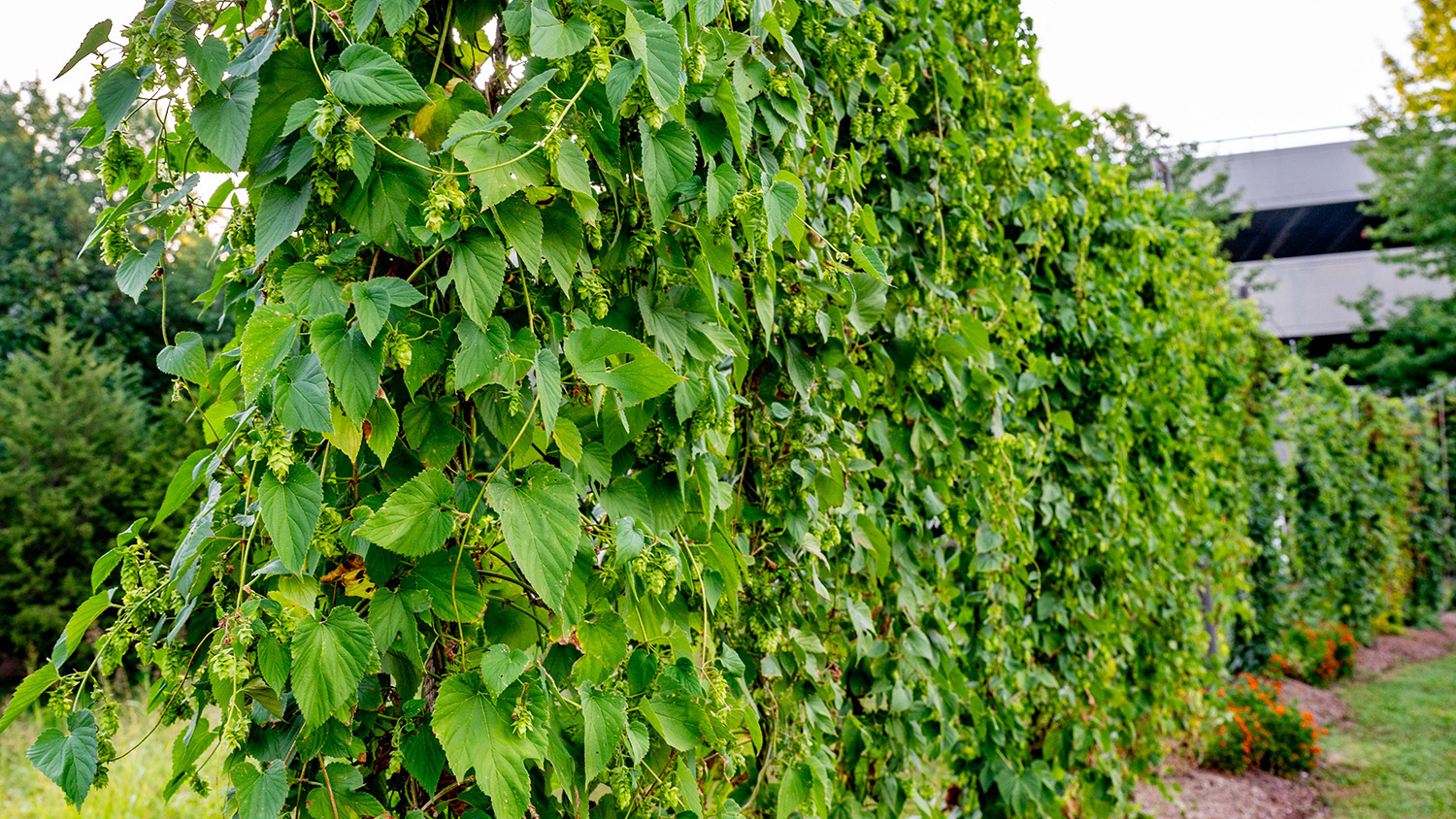
It’s late September, and the hops plants climb and drape over the 12-foot high trellis, laden with tiny soft green cones — each one holding the key to a really good glass of beer.
Hops aren’t supposed to grow well in North Carolina, but these plants are thriving. And the setting? Centennial Campus, where a bit of NC State’s agricultural research took root — literally — last summer.


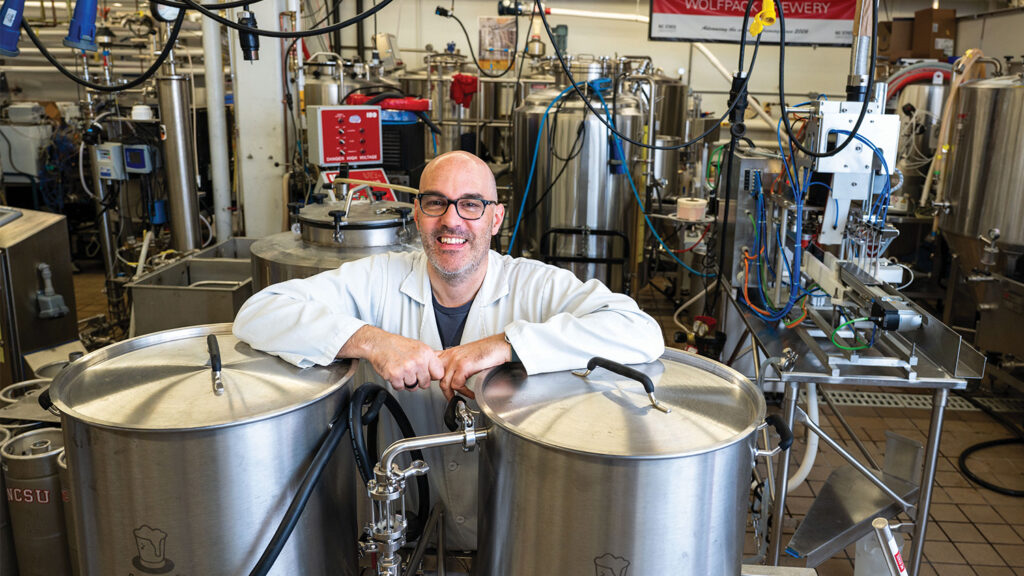

The display of climbing plants, called a “micro hop yard,” came about as a collaboration between Sebastian Wolfrum, a German-born brewmaster who teaches classes in NC State’s brewing minor, and Jude Desnoyer ’06, ’22 MBA, who handles outreach and programming for Centennial Campus. The idea was to showcase interesting research on campus that would engage visitors. “And beer,” Wolfrum says, “is always interesting.”
The hops were not just for show. They came from NC State’s Mountain Horticultural Crops Research and Extension Center in Mills River, N.C., destined for the brewing lab in the basement of Schaub Hall, where Wolfrum would work his magic. Hops are an essential ingredient in beer, Wolfrum explains, adding bitterness to offset the sweetness of the malt while their resins and oils provide other flavors.
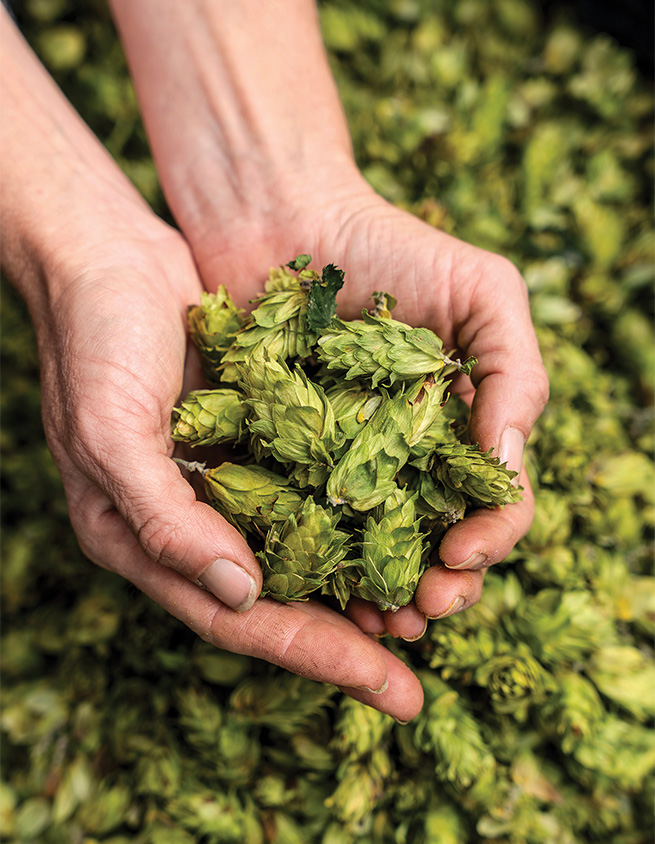
“Native-grown hops is the missing link.”
– Sebastian Wolfrum
“As the brewing industry has grown in North Carolina, there’s been a lot of interest in growing hops in the region,” says Wolfrum. There are already malt houses in the state that turn locally grown grain into malt to supply another essential beer ingredient. “Native-grown hops is the missing link,” he says.
The crop is mainly grown in the Pacific Northwest, but researchers at the Mills River center are working to change that. When grown in North Carolina, the plants do not get the same length of day in the growing season as they do in the northwest, and typically fail to produce a bounty of the tiny green cones, which are the flowers of the female plant. Jeanine Davis, associate professor and extension specialist in Mills River, says the few North Carolina farms trying to grow hops only get a quarter to a fifth of what plants in the northwest would produce. “There’s no way you’re going make money with that,” Davis says.

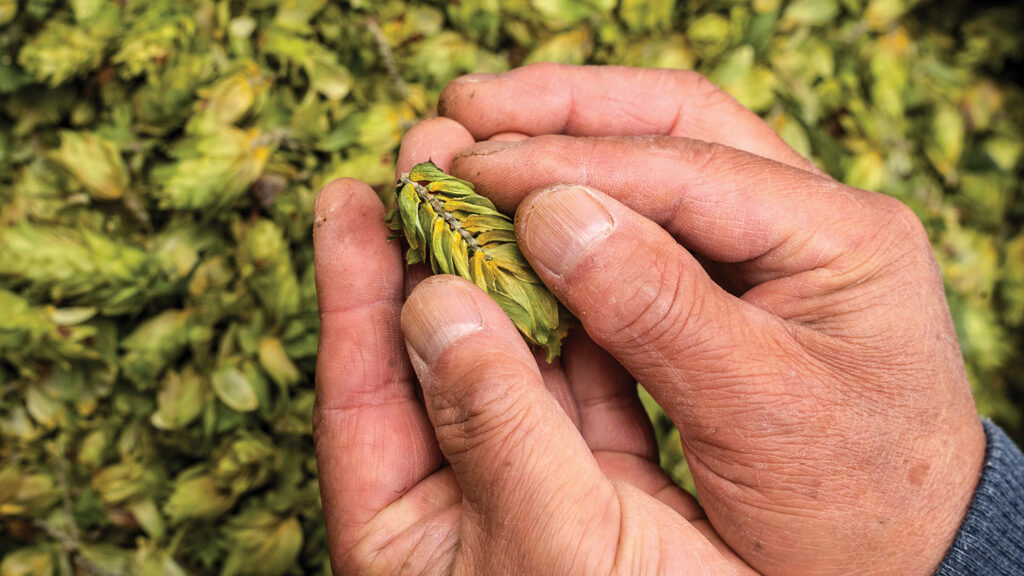
The breeding program started in 2016, after research associate Luping Qu became interested in a 100-year-old hops variety, not in commercial production, being grown on a test plot. “He was seeing differences in the plants, picking up on stuff that the rest of us weren’t seeing,’’ Davis says. “I saw indications that the plant has the genetics to perform well here,” Qu says.
It’s taken years of breeding (and hand harvesting), but now several strains have been producing a good yield. Some of the Mills River harvest goes to local breweries, including Sierra Nevada, Wicked Weed and Sideyard, with good reports on beer-making ability. There are 10 strains in trial now, and one is in consideration for use on farms. “We are starting to get interest from people who want to put in big hop yards,’’ she says. “They have the money and the investors to do it right.”
“I saw indications that the plant has the genetics to perform well here.”
– Luping Qu

For the Centennial mini hop yard, Qu sent two varieties. Davis says she was nervous. “I kept thinking, if disease gets in there, we’re going to have to put up a sign that says, ‘This is a pathology experiment.’” But, Davis says, “They did fantastic.”
Qu wanted to see for himself. “The plants looked like they were doing good,” he says, “but pictures can’t always tell what’s going on.” So he drove to Raleigh, and was thrilled when he saw the trellises. “It looked good — a lot of cones,” he says.
After a long, hot summer of growing, the hop yard was harvested by some of Wolfrum’s brewing students, Centennial Campus staff and curious passersby. The yield, about four pounds after drying, headed to Wolfrum’s brewing lab. About a week later, the fermenter — a large steel vat with dials and a cone-shaped bottom — was full of beer, about five barrels (or 150 gallons) in all. The beer blended two varieties of the Mills River hops, labeled 18.1 and 19.2, resulting in an English-style ale with a “smooth malt character balanced with robust hops bitterness,” Wolfrum says.
Of course, the proof was in the pudding — or in the glass. Wolfrum turned on the tap and poured the tawny liquid into a flask and then a small drinking glass. He took a sip, closed his eyes and smiled.
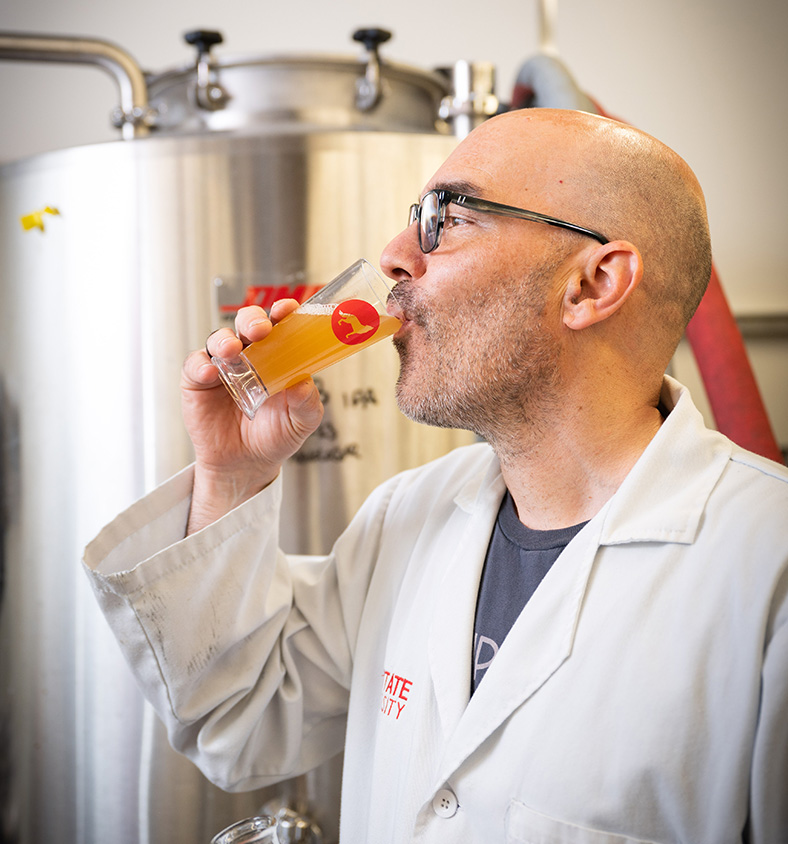
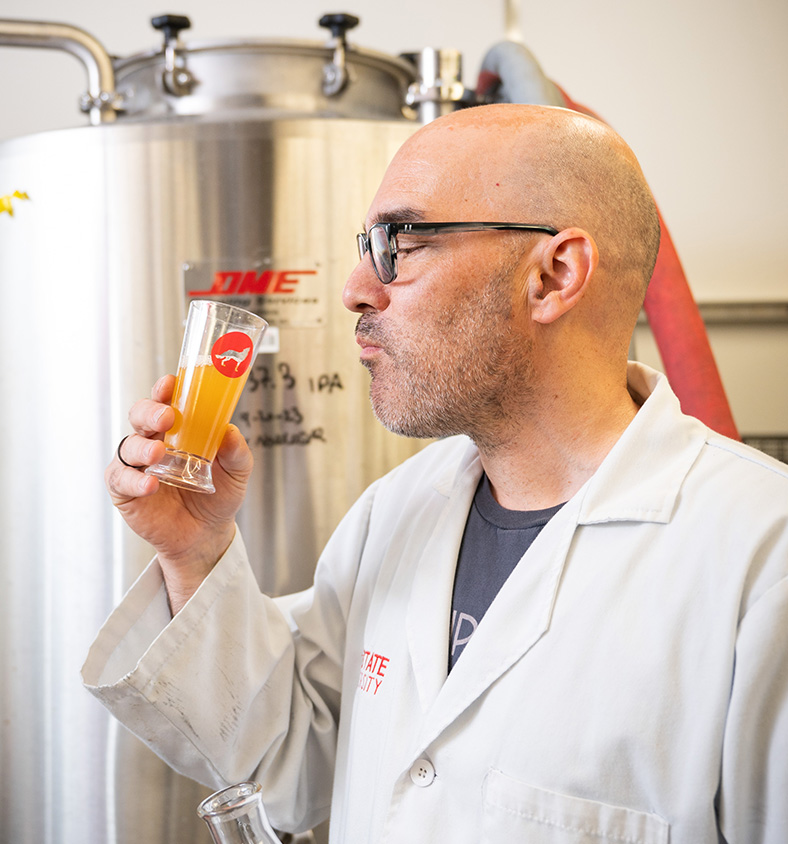
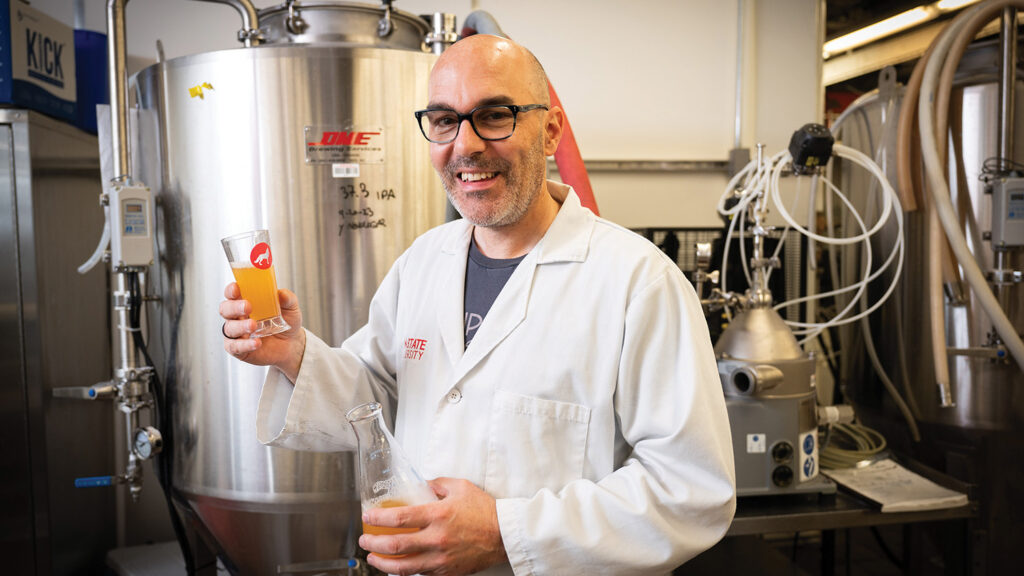



I think it would be super cool if CALS worked with JC Raulston arboretum to propagate clones of these hop varieties so that gardeners and homebrewers could get their hands on some of them. Great job on the research!